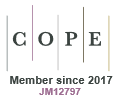Just Accepted
This article has been peer reviewed and accepted for publication. It is in production and has not been edited, so may differ from the final published form.
Investigating the Dynamic Behaviour of Merging Fire Fronts
Abstract
Background Merging fire fronts have been associated with rapid fire spread and extremely destructive wildfires, yet few studies have characterized these behaviours outside the laboratory. Aims This study aimed to improve our understanding of merging fire fronts using two experimental harvested crop burns in Victoria, Australia, in March and April 2021. Methods UAVs were used to capture the propagation of fire fronts exhibiting different merging behaviours, including forward and backward (V-shaped) junction fires, linear and coalescing fronts. Key results A fourfold increase in fire length of forward junction fires led to a doubling of the mean ROS. Forward junction fires spread, on average, three times faster than linear fire fronts, with some instances showing an eighteen-fold increase. They also exhibited higher temperature peaks during merging. An increase in the junction angle during merging was observed for all initial junction angles except 60°-90°, but in contrast to laboratory studies, no significant decrease in the rate of spread was found as the junction angle increased. Conclusions Our findings suggest that junction fires may lead to other dynamic fire behaviours involving pyroconvective interactions, firebrand showers, fire whirls and other effects. Implications These results demonstrate the need for further research into merging fire fronts dynamics, including the influence of fuel and weather, to improve operational fire behaviour models.
WF24126 Accepted 31 May 2025
© CSIRO 2025



